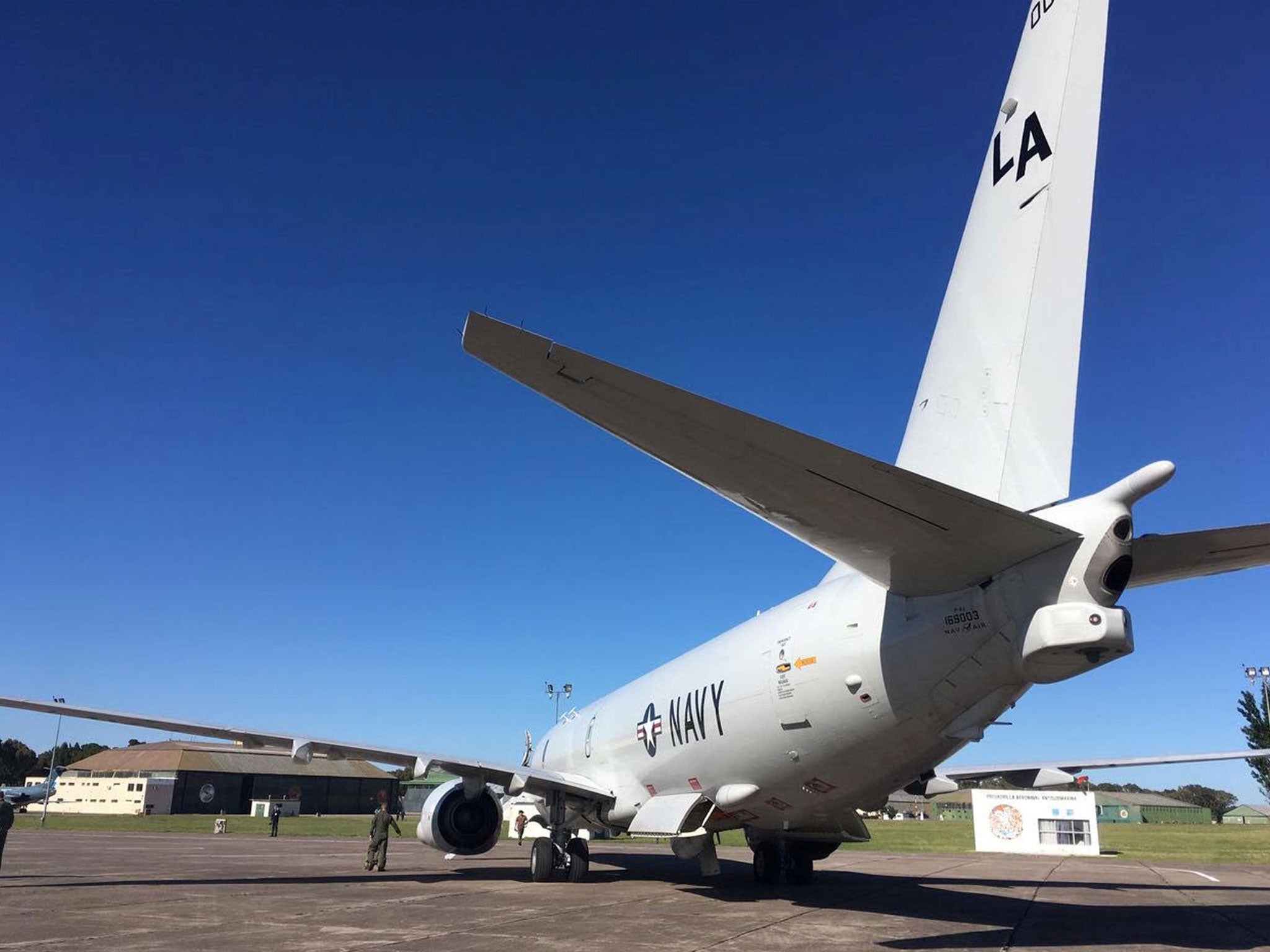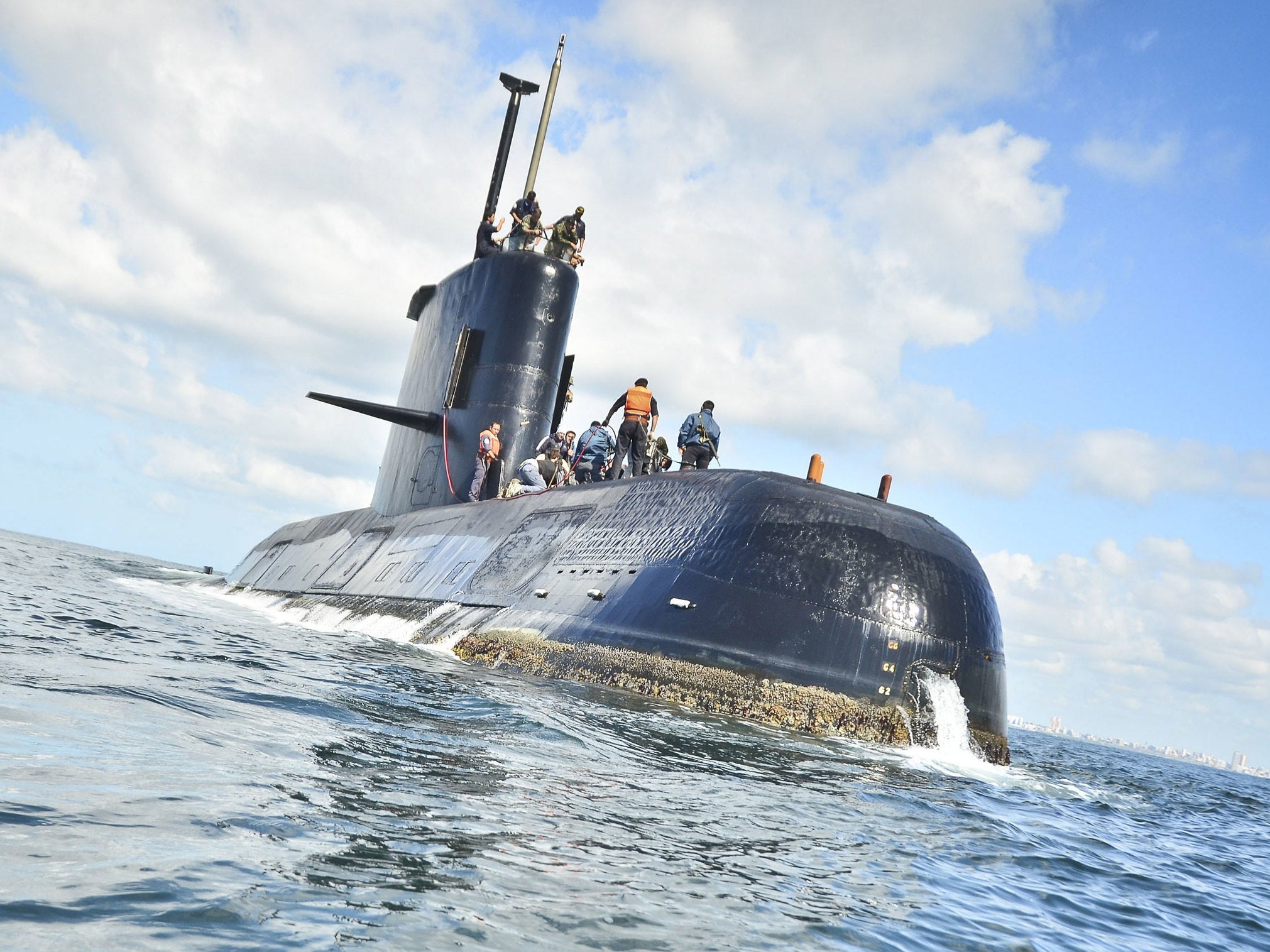ARA San Juan: Object detected by US Navy plane near area where Argentinian submarine went missing 'not the lost sub'
Search enters 'critical phase' with oxygen supply feared to be running low

Your support helps us to tell the story
From reproductive rights to climate change to Big Tech, The Independent is on the ground when the story is developing. Whether it's investigating the financials of Elon Musk's pro-Trump PAC or producing our latest documentary, 'The A Word', which shines a light on the American women fighting for reproductive rights, we know how important it is to parse out the facts from the messaging.
At such a critical moment in US history, we need reporters on the ground. Your donation allows us to keep sending journalists to speak to both sides of the story.
The Independent is trusted by Americans across the entire political spectrum. And unlike many other quality news outlets, we choose not to lock Americans out of our reporting and analysis with paywalls. We believe quality journalism should be available to everyone, paid for by those who can afford it.
Your support makes all the difference.An object detected by a US Navy plane near the area where a missing Argentinian submarine sent its last signal is "not the lost sub", officials said.
A witness on board the search plane earlier said an item had been spotted but the crew emphasised that it was not known if it was connected to the vessel.
A spokeswoman for the US embassy in Argentina later confirmed there was no link to the missing vessel.
The agonising wait for news of the whereabouts of the ARA San Juan has intensified in recent days as fears grow that the oxygen supply on board could be running low.
If the German-built submarine, in service for more than three decades, had sunk or was otherwise unable to rise to the surface since it gave its last location on 15 November, it would be using up the last of its seven-day oxygen supply.
The search for the submarine and its 44 crew has entered a "critical phase", Argentine navy spokesman Enrique Balbi said, as teams continue to scour 185,000 square miles of ocean - roughly the size of Spain.
Reports on Wednesday that a US Navy vessel had detected a "heat stain" and infrasound in the area were dismissed by Pentagon officials, who told The Independent it remained an active search operation.

A US Navy Boeing P-8A Poseidon jet is involved in the search alongside an RAF Voyager carrying equipment and submarine specialists.
The helicopter is packed with equipment, including 12 emergency life support pods. It joins HMS Protector, a Royal Navy ice patrol ship; the HMS Clyde, an offshore patrol vessel; and an RAF C-130 in the search.
The US aircraft has returned to its base in Bahia Blanca, around 200 miles south of the capital, Buenos Aires.
Russia's defence ministry has sent an oceanographic research ship equipped with two self-propelled deep submergence vehicles allowing it to examine underwater areas up to 3.75 miles below the surface.
Join our commenting forum
Join thought-provoking conversations, follow other Independent readers and see their replies
Comments